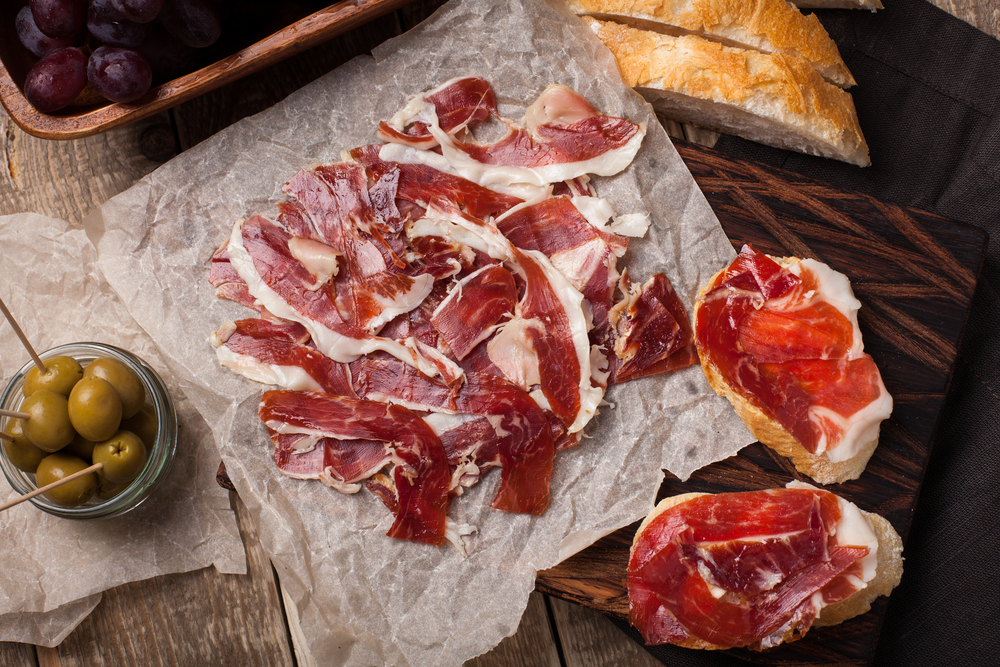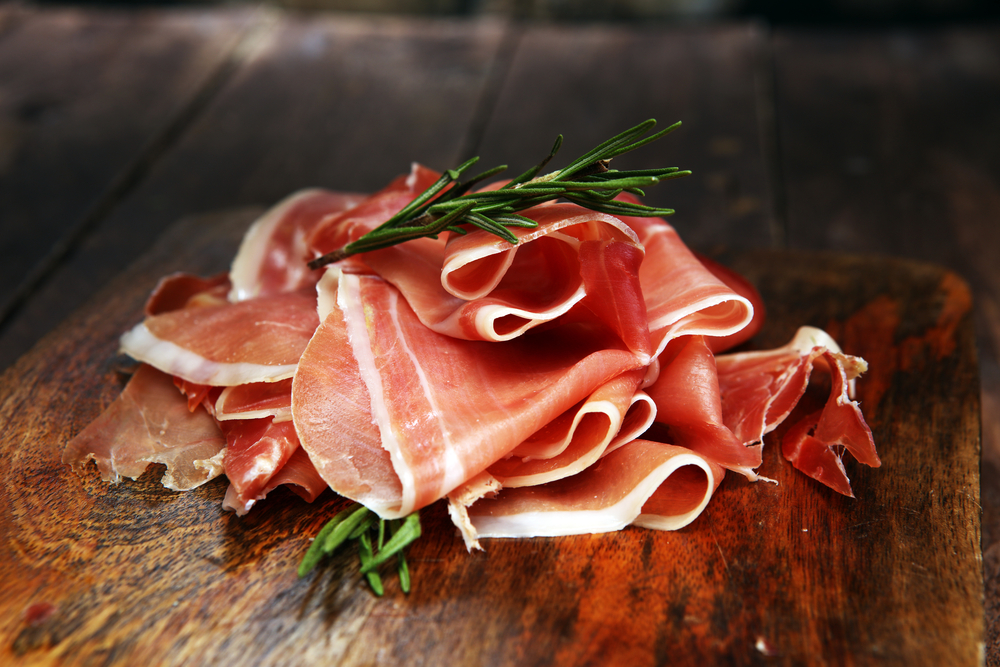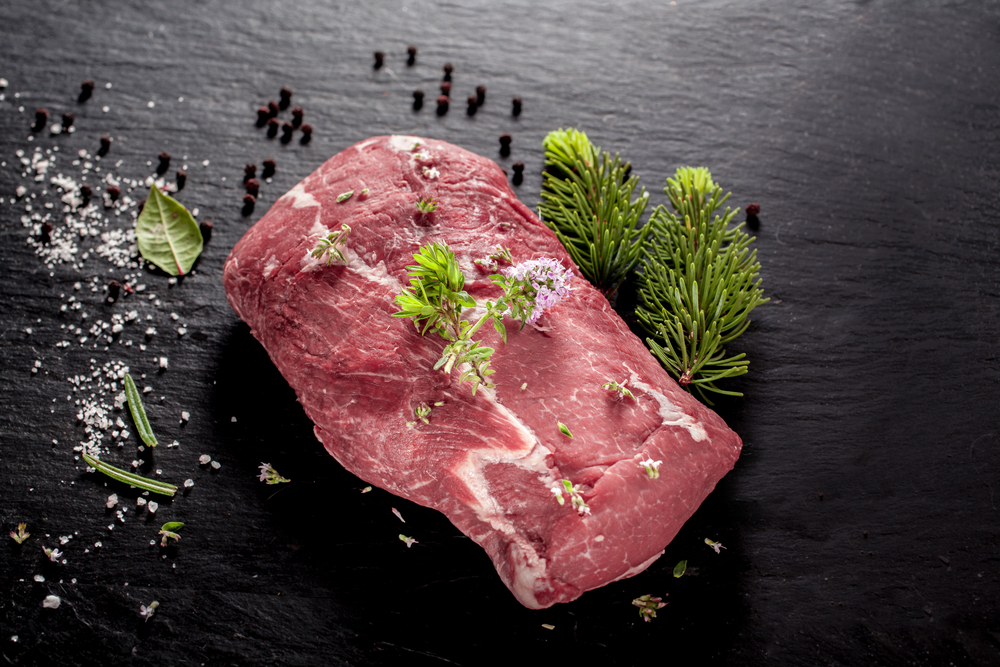In the world of appetizers and fine dining there are two heavy hitters: Spanish ham and Prosciutto. These are salted and cured meats that are thinly sliced and eaten with breads or cheese. Spanish ham and Prosciutto each have different types and varieties.
The differences in Spanish and Prosciutto ham lie in the type of pig it comes from, what they are fed, how the meat is cured. Spanish ham can come from two different types of pig while Prosciutto typically comes from one type of pig, or a boar. Spanish ham is different in the way it tastes from Prosciutto due to the different processing methods and both are far different from regular ham.
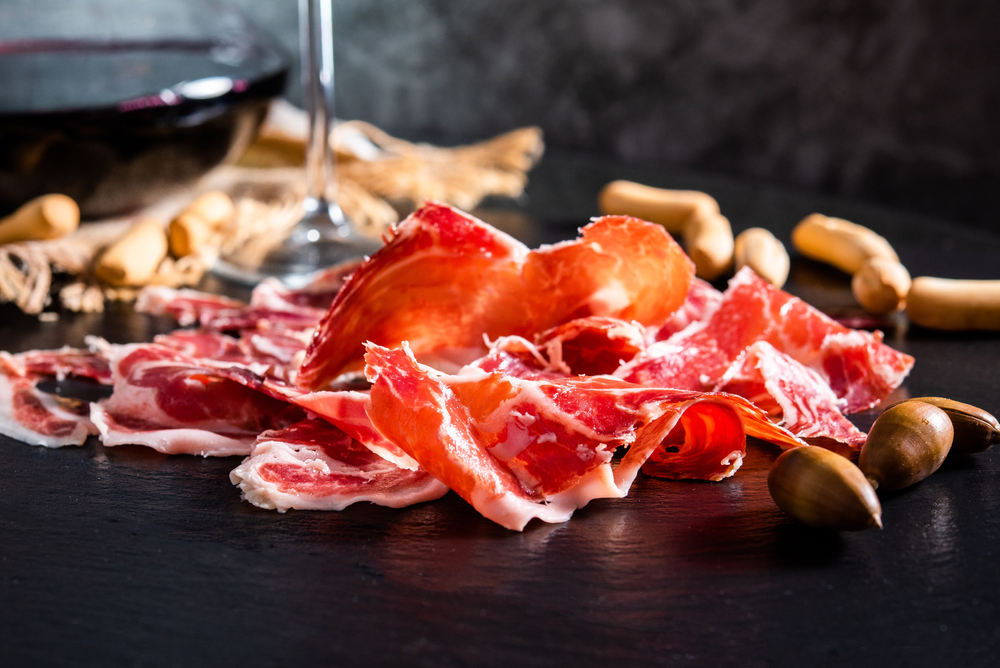
Spanish Ham
Spanish Ham is called Jamón Serrano or Jamón Iberico and both come from regions in Spain.
Jamón Serrano
Jamón Serrano comes from white Landrace pigs that are given a diet of cereal grains. The meat is then harvested from the hind leg of the pig.
- The starting piece of meat is about 12-15 pounds of weight on average
- The meat is salted and left to rest for a few days for the salt to absorb contaminants and water
- The meat is then rinsed off and coated in salt again
- This batch of meat is then hung to dry in a cellar that mimics the changes in the seasons
- Cured for 12 to 36 months
- Has a woody, nutty, intense flavor
- Dry and chewy
- Darker red coloration of meat
- More expensive than Prosciutto
An interesting thing to consider with Jamón Serrano is that it was originally cured in mountainous regions. These regions are where the winters are cool and moist and the summers are hot and dry. Today’s modern technology allows for various settings in cellars to allow for proper curing regardless of the weather outside.
Jamón Iberico
Jamón Iberico comes from a special black Iberico pig that lives in a region of Spain. These pigs are considered free-roam and eat acorns and chestnuts. The meat is taken from the hind leg of the pig.

- The starting piece of meat is also about 12-15 pounds of weight on average
- The meat is salted and left to rest to absorb any blood, water, or bacteria
- The meat is re-salted and hung to cure for roughly 48 months
- Has a rich, buttery, sweet, and nutty flavor
- Chewy and dry
- Meat can almost appear black
- Most expensive type of ham
- Protected by a trademarked black seal
Prosciutto Ham
Prosciutto ham comes from white Landrace pigs or even boars that come out of Italy. These pigs are fed fruit and whey. Prosciutto can be cooked or boiled to become Prosciutto Cotto or left raw and cured to be Prosciutto Crudo.
- The starting piece of meat weighs about 15 to 20 pounds on average
- The meat is salted and left to rest for a few weeks to absorb blood, water, and bacteria
- The meat is rinsed and re-salted, herbs and garlic can also be added
- The meat is hung to dry for 14-36 months
- Is a sweet and milder flavored ham
- Since humidity is maintained in the process, the meat is more moist than Spanish hams
- Meat is a light pink
- This is the cheapest option of the delicacies involving ham
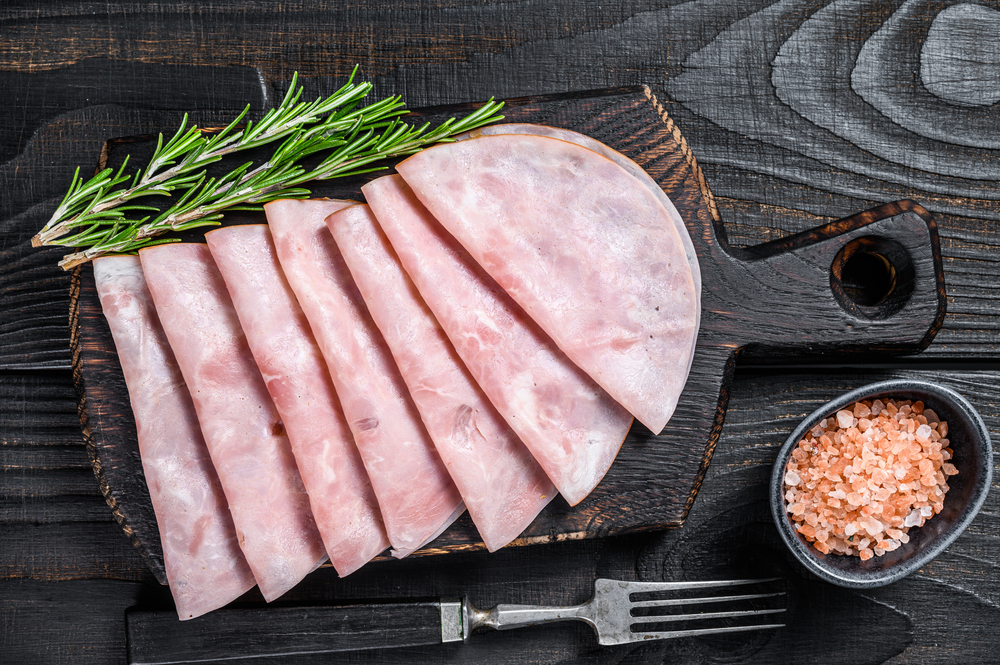
Prosciutto di Parma
There are rare types of Prosciutto and that includes Prosciutto di Parma. This type of Prosciutto has a very simple recipe: salt and ham. The pigs must be fed a special diet to maintain quality standards.
- The starting piece of meat weighs about 15 to 20 pounds on average
- The meat is salted and left to rest for a few weeks to absorb blood, water, and bacteria
- Only come from special regions in Italy
- Diet must include whey from Parmigiano Reggiano cheese
- Trademarked with a Ducal Crown
Related post: What to Serve With Serrano Ham
Conclusion
Spanish ham and Prosciutto are very similar, however there are some stark differences. These differences lie in the methods of being produced and also what kind of animal the meat comes from. Spanish hams come from Spain and Prosciutto comes from Italy.
Both types of ham are salted and cured for many months to years. The finished products can be eaten raw due to the curing process. This type of meat is a delicacy and can be included in appetizers and charcuterie boards.


